Burghorn culvert lock
Near recreation park Burghorn, in a gentle bend in a medieval part of the Westfriese Omringdijk, hidden in the greenery lies a culverted sluice. It looks rather peaceful, but for centuries the Burghorn polder and the Schagerkogge quarreled because of the water nuisance the lock sometimes caused.
The monumental lock dates from 1739, but its history stretches back to the 15th century. Back then, a culvert sluice was constructed at this spot, essential to drain the new Burghorn polder. Excess water was drained through the ditches of the Schagerkogge, which consisted of Schagen and the surrounding countryside. It then flowed to Kolhorn, where it was discharged into the Zuiderzee.
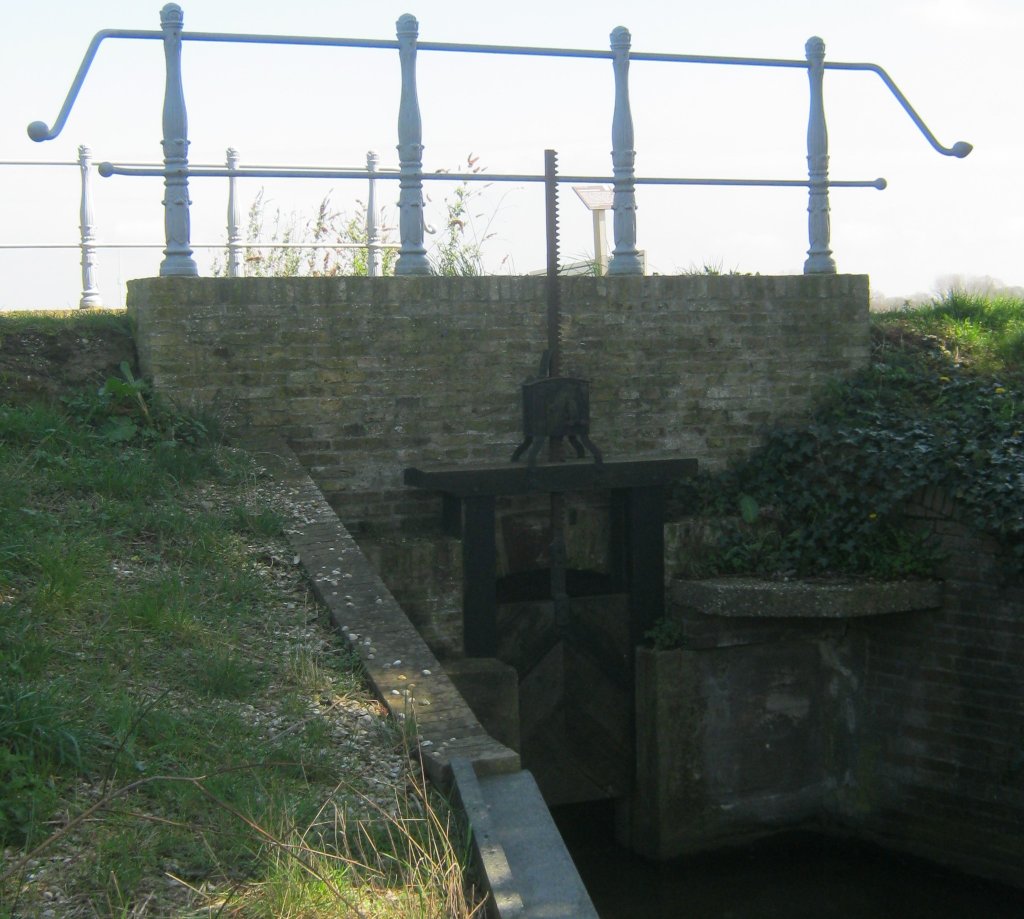
In the course of the 13th century, the sea swallowed up a lot of land and behind the dunes of Callantsoog, the large inlet of the Zijpe took shape. To stop the advancing sea water, the Valkkogerdijk was constructed, which connected to the Oudedijk at an acute angle . During storms, however, this remained a weak spot in the Westfriese Omringdijk. In 1421, the Oudedijk broke through and a large lake, the Schagerwiel, formed behind it.
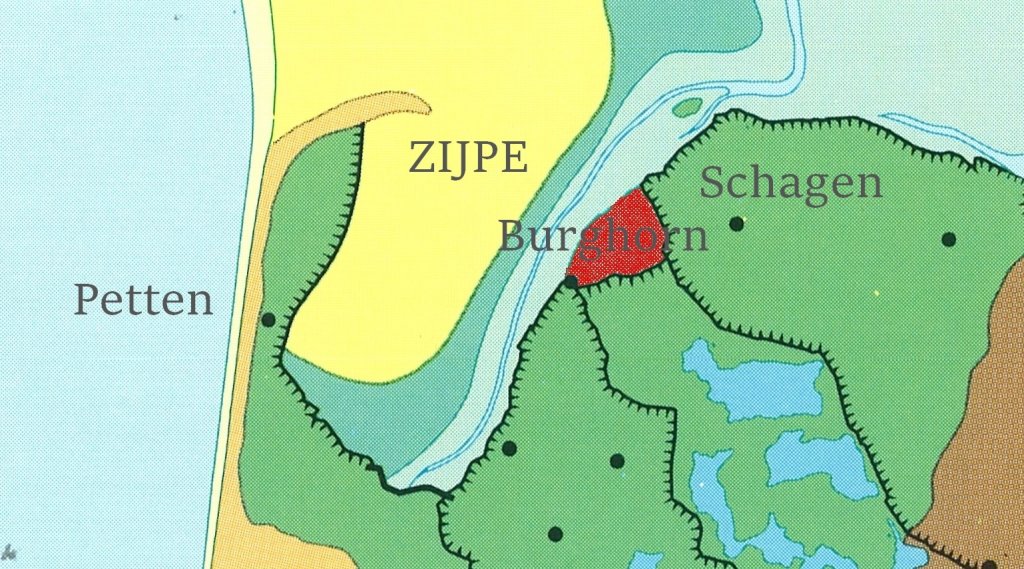
Here the sea threatened to break through to the Heerhugowaard and the smaller lakes connected to it. That is why the Count of Holland wanted to dike the Zijpe as early as 1388. Meanwhile, the corner between the Valkkogerdijk and the Oudedijk silted up into a salt marsh. Local residents grazed cattle there in the summer, collected eggs and hunted birds. This led the lord of Schagen, Willem van Beieren (1387/9-1473) to dike the salt marsh. He was an uncle of the count and an influential nobleman.

In 1457, he received grave permission for this. He found rich Hollanders willing to invest in the embankment, which was completed in 1462. The count stipulated that the West Frisian hinterland, including the Schagerkogge, had to pay the maintenance of the dike that dammed up the salt marsh. In 1463 Lord William regulated the drainage via the sluice in the Oudedijk. Discharge into the Zijpe was unfortunately not possible. It was too heavily silted up and the polder soil was sinking fast.
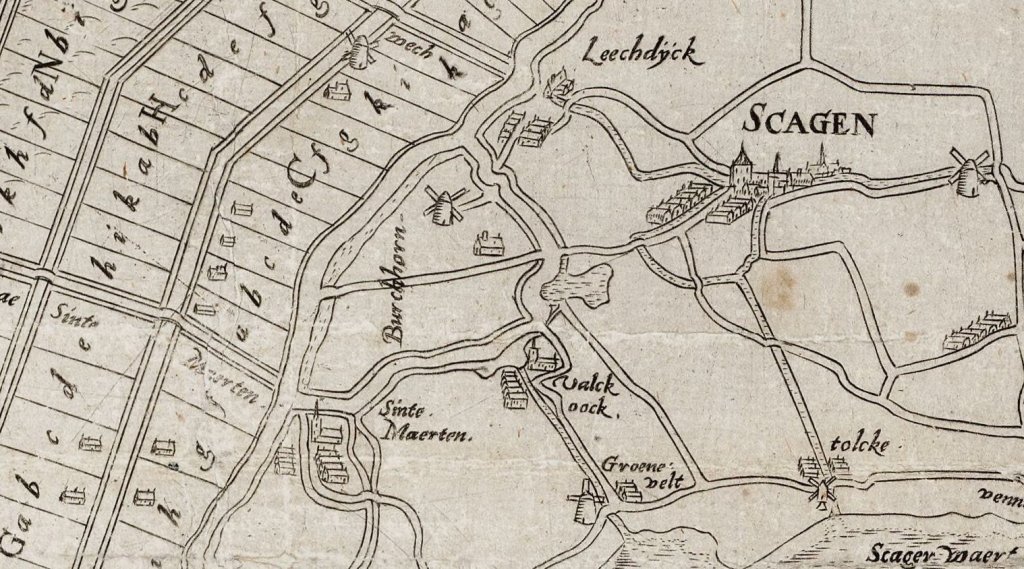
The lock was constructed near a rise in the landscape called the Hale. Via the ditches of the Schagerkogge the water was led to Kolhorn. The main purpose of the lock was and remained drainage, but of course eel fishing was also possible here. The polder became a seigniory that Willem van Schagen gave to a son. The lord of Burghorn earned well from eel fishing.
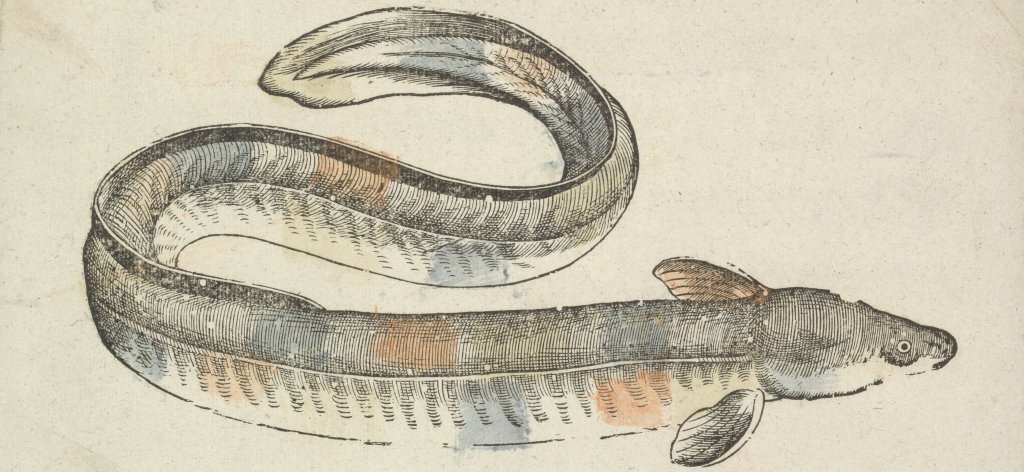
In the first years, gravity was enough to drain the 265-plus acre polder, but soon the polder land became lower than the land of the Schagerkogge. The landowners of Burghorn therefore invested in an expensive windmill in 1467. The Schagen people were not happy with all that water, but Schagen was only allowed to keep the sluice closed when Burghorn flooded, to prevent the land from salinizing due to seawater.
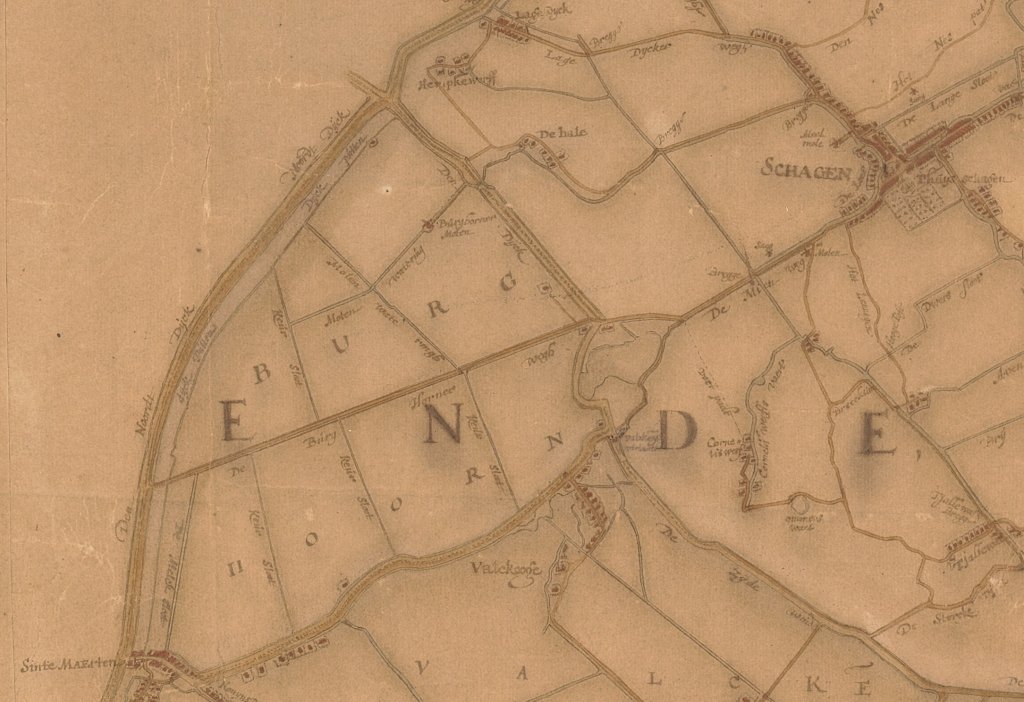
In 1509 the polder was hit by a disastrous storm surge and the lord of Schagen indeed had the sluice quickly closed. This led to a huge family quarrel and a lawsuit with the lord of Burghorn. The lords reconciled, but the drainage continued to cause difficulties. The Zijpe was reclaimed in the 16th century, but the land there was also much higher than in Burghorn. Therefore, the water still had to go through the Schagerkogge to Kolhorn.
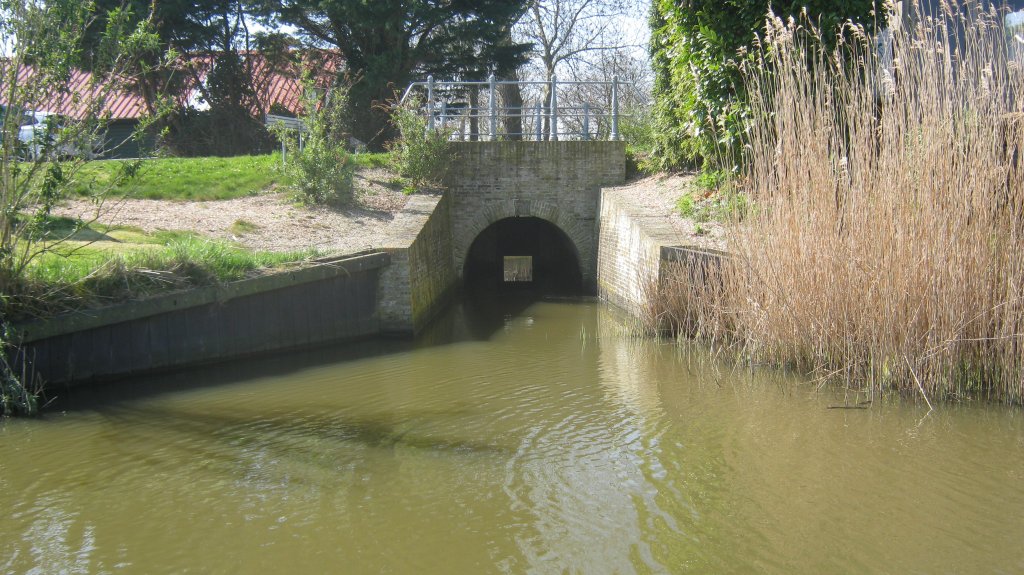
Around 1625, land subsidence in the Schagerkogge led to Burghorn gradually becoming higher. After the Schagerkogge built its own mills, the two water boards entered into an agreement in 1738. The Schagerkogge took over the polder drainage for an annual payment of 100 guilders. Not long thereafter, the Burghorn mill was sold and the current culvert, consisting of one lock chamber, was constructed in 1739. The culvert has an arched barrel vault and can be closed with a slide, opening and closing with a windlass.
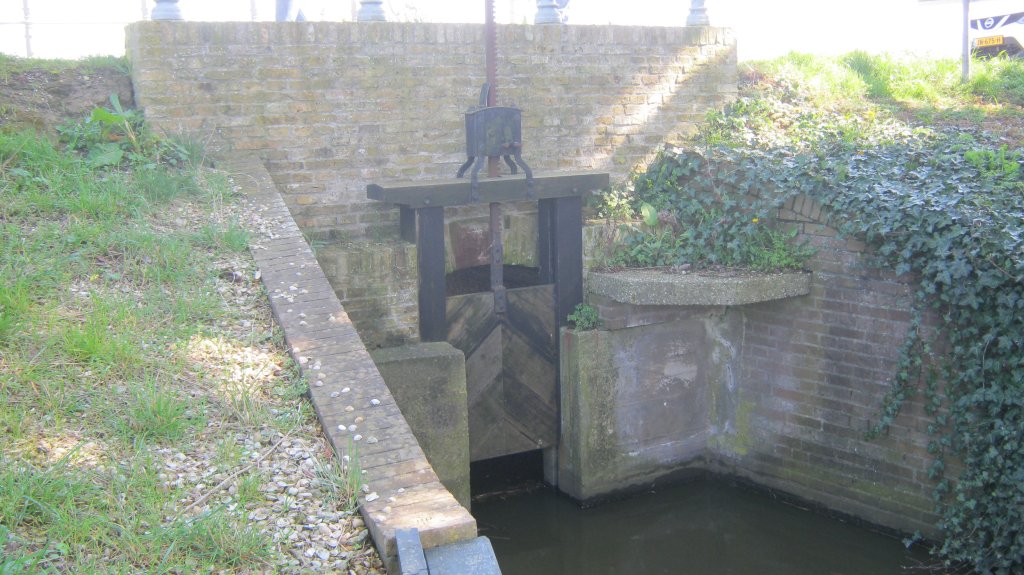
Disputes over the inlet and outlet of water between the two polders continued to fester until 1902, when a satisfactory solution was found. In the years 2015-2017, the culvert lock was restored by the Water Board. The rotted wooden railings were then replaced with cast iron balusters. Despite this renovation, the Stichting Historische Sluizen en Stuwen in Nederland awarded this restoration in 2017 with a shared third Locks Award. The culvert lock is considered a rather unique type.
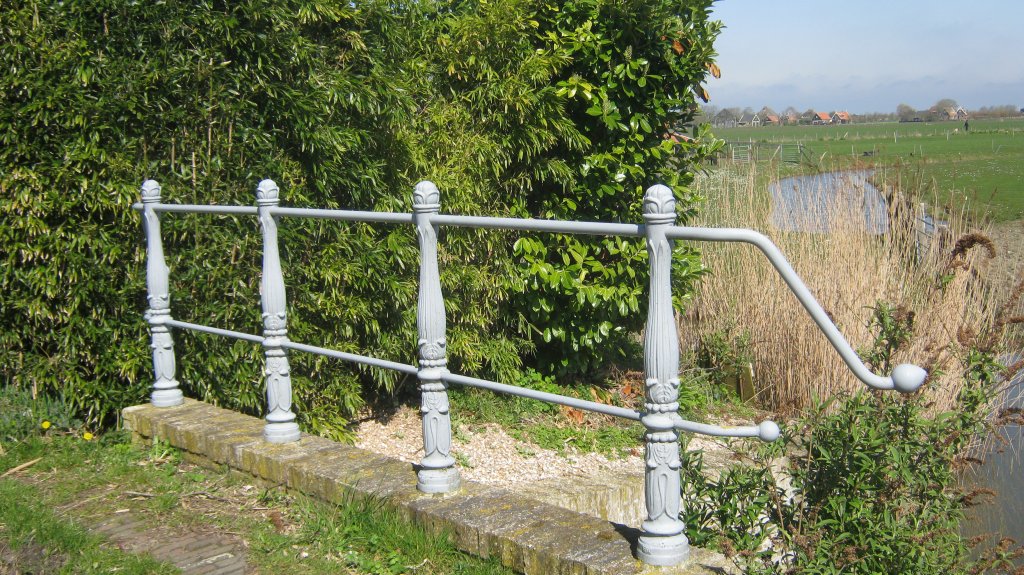
Additional
- The Burghorn culvert is somewhat off the usual cycling and walking routes: those who want to cycle past it generally have to deviate a bit from the route over and around the Westfriese Omringdijk.
- The same goes for the fourth stage of the Streekpad Westfriese Omringdijk. Those who want to walk past the culvert lock must deviate from the route for a while.
- One walking route that does pass the culvert lock is the Oudedijkroute of the North Holland Walking Network.
- Other, smaller hiking trails that come close are the Wielenroute from the North Holland Landscape, the Purple Route from St. Martin and the Burghorn Route from the North Holland Walking Network.